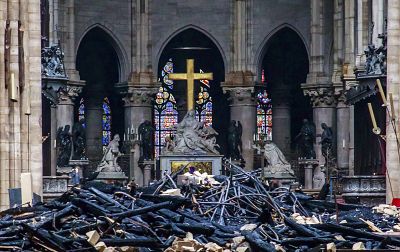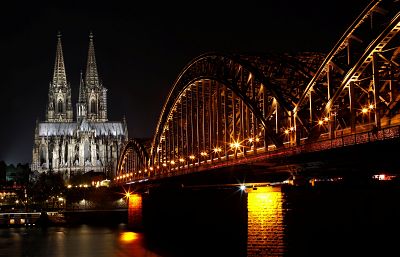"It will certainly take years, perhaps even decades, until the last damage caused by this terrible fire will be completely repaired."
Cathedrals often took more than a century to build in medieval times, a process that sometimes spanned the lives of several monarchs.
So French President Emmanuel Macron's pledge Tuesday to restore fire-devastated Notre Dame within five years was at odds with experts who predicted restoring the jewel of Gothic architecture would likely take much longer.
A host of specialized artisans and skilled workmen will need to be gathered from around France, and likely beyond. These include master stone-cutters, mortar makers, carpenters, roofers, quarrymen and sculptors.
Speaking before Macron's announcement, Emily Guerry, a professor of medieval history at England's University of Kent, anticipated restoration work on the 850-year-old icon would take around two decades.
"This will be the largest, most important cultural renovation project in France for some time to come," she said, adding that the process would be "very delicate."
Jean-Claude Bellanger, secretary-general of Les Compagnons du Devoir, an organization that provides training in manual trades, told Le Parisian newspaper that the niche nature of the work would require an influx of new talent.
"We need to open some 100 places in our carpentry, stone-cutting and roofing sections," he said, with at least 300 more skilled tradesmen also needing training.
A decade is necessary to train some of the specialized workers required for such a project, Bellanger added.
Bertrand de Feydeau, vice president of preservation group Fondation du Patrimoine, told France Info radio that the 800-year-old roof that went up in flames was built with wood from forests that have all but disappeared.
It won't won't be rebuilt precisely as it was before because "we don't, at the moment, have trees on our territory of the size that were cut in the 13th century," he told The Associated Press.
World news
Macron's promise was aimed at galvanizing a nation reeling after a blaze tore through the 12th-century landmark.
And with around $1 billion raised in donations for Notre Dames's reconstruction, Macron appeared confident it could be made whole again in time for the 2024 Paris Summer Olympics.
"We have so much to reconstruct," he said. "So yes, we will rebuild the Cathedral of Notre Dame more beautifully. And I would like it to be achieved in five years from now. We can do it. And we will mobilize."
But the timescale of similar projects suggests Macron might be focusing on optimism over realism.
The Gothic cathedral in Cologne, Germany, was badly damaged during World War II and work to repair it is ongoing more than 70 years later.
"This is certainly a tragedy with a European dimension, because the Gothic style was invented in France," Peter Fuessenich, who is leading the reconstruction in Cologne, told the AP. "It will certainly take years, perhaps even decades, until the last damage caused by this terrible fire will be completely repaired."
Pierluigi Pericolo, who is in charge of restoration and security at the St. Donatian basilica in the French city of Nantes, said it could take two to five years just to secure and stabilize Notre Dame, given its size.
"It's a fundamental step, and very complex, because it's difficult to send workers into a monument whose vaulted ceilings are swollen with water," he said on France Info. "The end of the fire doesn't mean the edifice is totally saved. The stone can deteriorate when it is exposed to high temperatures and change its mineral composition and fracture inside."
Historians and experts in medieval architecture tried to assuage worries around the world about the future of Notre Dame, saying that such disasters were natural in the lifespan of such buildings.
Sara Uckelman, a professor at Britain's Durham University, pointed out that the cathedral has endured sieges and two world wars.
"I'm finding that my background and training as a medievalist means I'm, overall, finding it a lot less devastating than many people," she wrote in a Facebook post. "I know how churches live. They are not static monuments to the past. They are built, they get burned, they are rebuilt, they are extended, they get ransacked, they get rebuilt, they collapse because they were not built well, they get rebuilt, they get extended, they get renovated, they get bombed, they get rebuilt."
Uckelman added: "It is the continuous presence, not the original structure, that matters."













